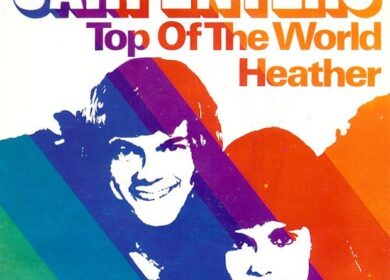
Cross-posted from Ishmael’s Corner
By Melissa Lewelling, Account Executive, The Hoffman Agency
At nearly every PR event featuring journalists, there is the ethereal question, “How can PR help you do your job better?” Frankly, as a former journalist myself, I tend to find it comical. These types of events often feature panels of media professionals who don’t want to be there, don’t really care about answering that question and often hate even hearing it.
In the PR industry, we regularly talk about “relationship building with media.” However, if we are honest, there isn’t much time on either side (let alone in a source-coverage exchange interaction) to have a genuine conversation about personal interests or industry trends. That’s why I found PRSA Silicon Valley’s recent conversation with Quentin Hardy so refreshing.
He was as facetious as one might expect a New York Times writer to be, but was genuinely interested in having an exchange with the audience. He was also sincere in the giving of his time so everyone had a chance to engage (even calling for more female participants during the Q&A). Quentin seemed ready and willing to talk with us all night and provided some colorful quotes for PR professionals to keep in mind:
- “People like learning about the world and need it explained to them in terms they’ll understand.”
- “There’s nothing more seductive than fearlessness [in a spokesperson].”
- “The more levels you have in a story the better: colorful, insightful, characters in peril, the story about going home.”
- “Know your own topic well and avoid facile tropes [when pitching].”
- “I get about 200 pitches a day and lean toward the circles of trust: things you know, the people you trust and what they know and institutions you trust … it does put blind pitches at a disadvantage.”
- “Feature reporting has to do with rapport and feel.”
- “I’m not going to write about what I just wrote … I have ADD.”
- “In the next three to five years, companies will continue to bypass the media with social and be more like content studios, producing finished products.”
Throughout the night, Quentin’s sense of humor (personified by his Twitter profile) was also in attendance, adding levity to the conversation and engaging the audience.

However, as much as I enjoyed the above insights and banter — amid the dim lights, smell of hors d’oeuvres slowly cooling and the faint scuttle of feet — here’s what I really learned from our night as frien-quaintances:
1. Journalism isn’t dying, but analytics and an ad-subscriber model may be key for its transformation.
Before the anticipated question about the widening ratio of journalists to PR professionals, which Quentin seemed unconcerned with, he talked about the business model of his publication and its strengthened financial position. As the internet and digital landscapes have changed the revenue game for publishers, The New York Times has adopted an ad-subscriber model that is going well, according to Quentin’s account, and is helping the publication to remain focused on hiring and retaining the country’s top talent.
Additionally, the publication recently invested in building its own in-house analytics dashboard, Stela, as a way to provide its writers with more data, such as readership fluctuations in response to headline changes, which channels are leading readers to specific content and on which platforms the content is being consumed. Quentin noted that he is able to now take the platform (desktop, mobile or tablet) into consideration when writing headlines and planning visuals as a result of this data — something PR professionals should also keep in mind when pitching a story.

2. Avoid generalizations when speaking to an industry expert.
We all know this deep down, but when faced with the pressure of an in-person Q&A (and a couple of dozen faces staring back) it can be easy to simplify a potentially complex question for the sake of time (or nerves).
However, in my experience, most journalists don’t respond well to generalizations of an industry they know as well as their byline, so asking a leading or broad question tends not to generate a very insightful response (as the time is usually spent trying to narrow the initial question). As a result, it’s clear that thoroughly thinking through and vetting any potential question before asking it — also true for pitch writing — is of vital importance when interacting with the media, and will ultimately lead to more beneficial exchanges.

3. The future of the sharing economy and tech industry are moving toward a focus on the “efficiency of virtualization projected on a physical landscape” — and this impacts everything.
Quentin was quick to dive into his personal passion for covering the ways in which tech from Silicon Valley affects non-obvious aspects of life in Middle America — such as how the cloud is used by a Texas high school football coach and how an Indiana farmer uses big data. This personal interest evolved into a conversation around the pros and cons of the sharing economy and where he sees it heading — namely, everywhere. Similar to the social disruption of the early 1900s, artificial intelligence, robotics, the internet of things and the sharing economy are all shifting industries in unexpected ways, currently creating an “emotional dissonance” in the U.S. amplified by social media.
However, Quentin pointed out that in the long term these innovations are doing more than just muddling people’s view of their future jobs, but shifting how entire industries function (i.e., turning a single car into a taxi fleet or an apartment into a hotel) and relate to technology as they physically manifest the principles of software virtualization. As PR professionals, this is an insight that can’t be overlooked because it should change the way we view our clients’ stories — remembering that everything is connected beyond what the surface might suggest and compelling us to dig deeper to find that unexpected application.
Side note: Reno Ybarra and Anne Stanley from Engage PR also wrote on the topic, “A Conversation with The New York Times’ Quentin Hardy.”
This story originally appeared on Ishmael’s Corner.

